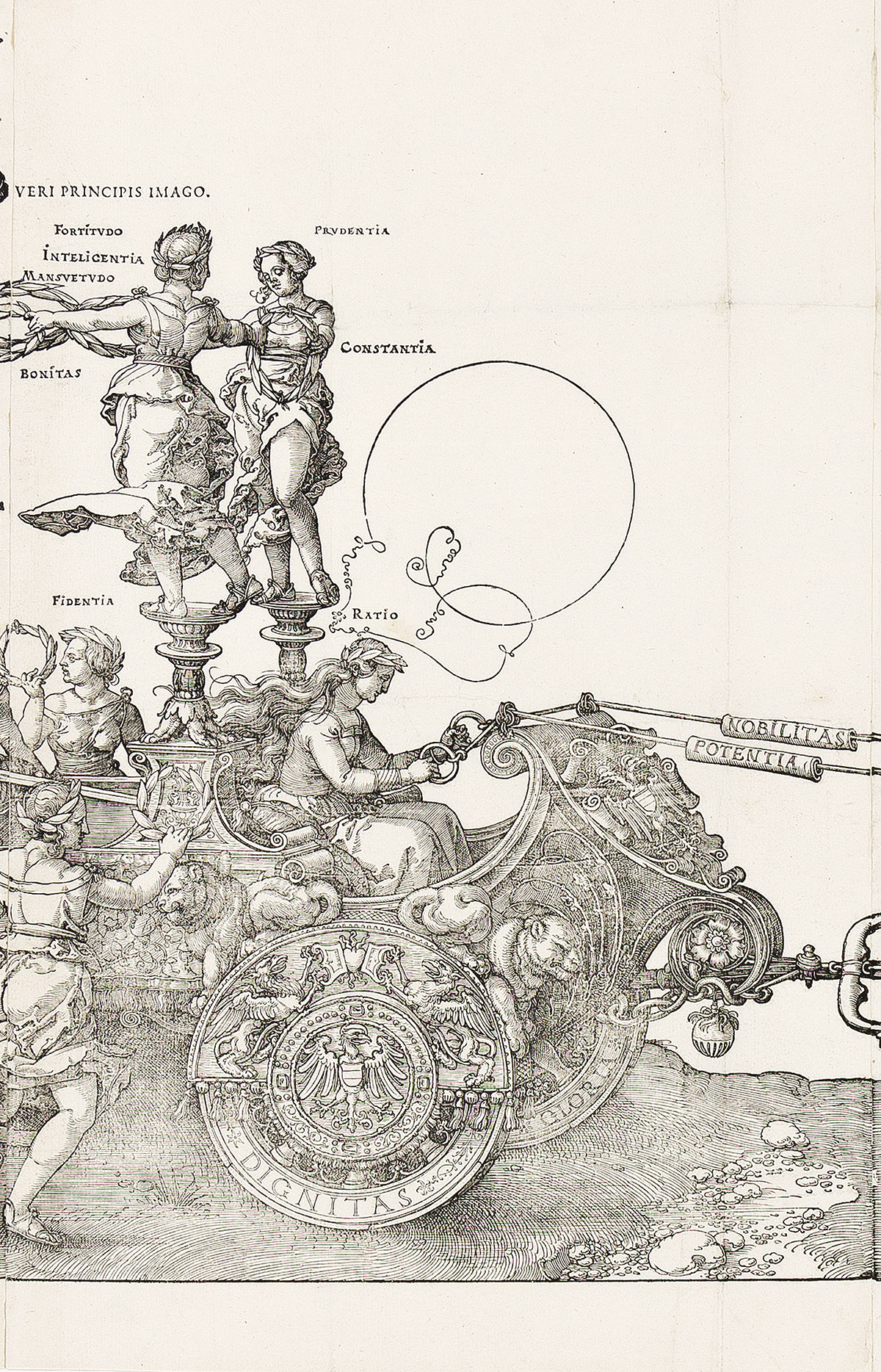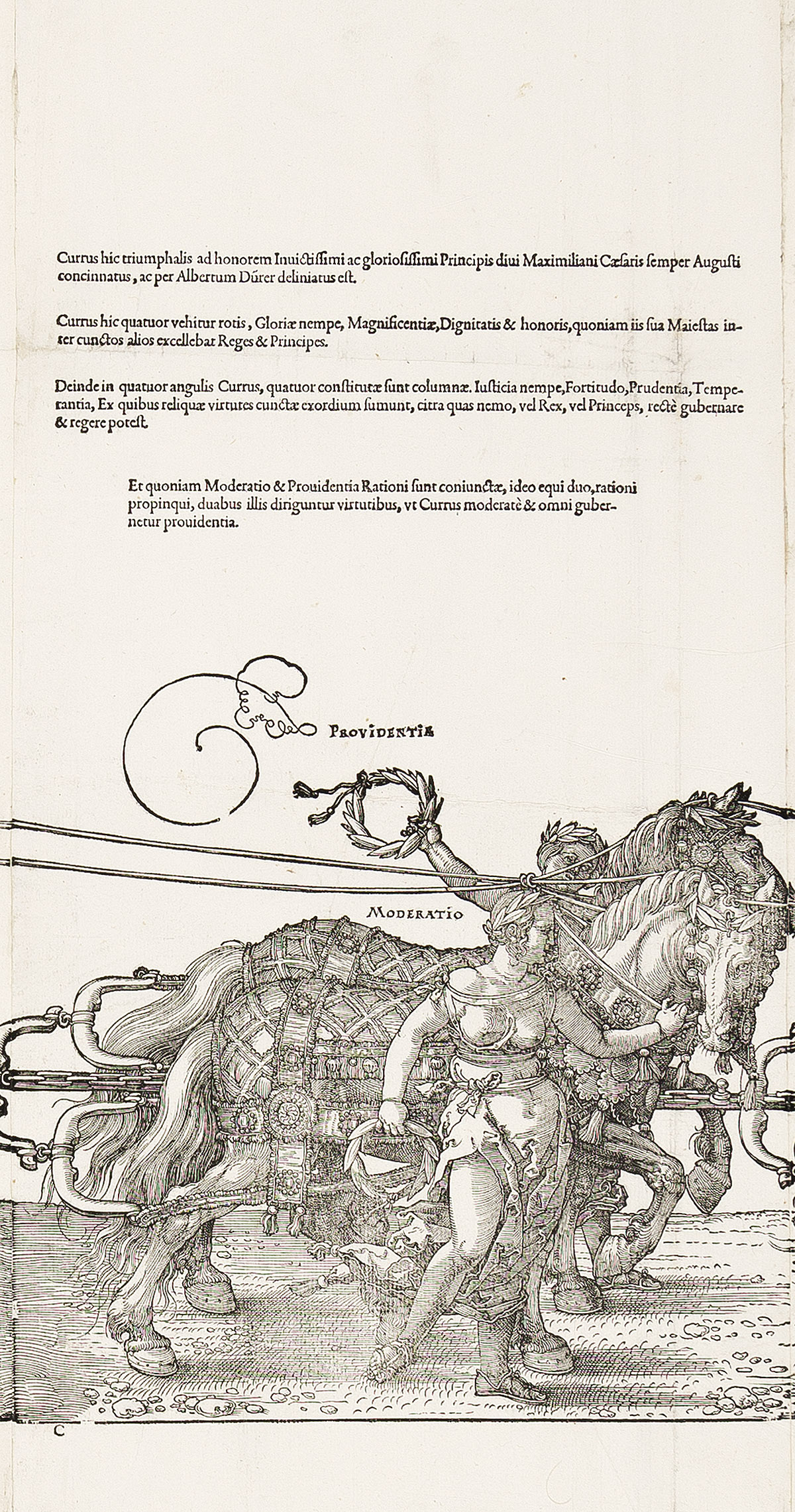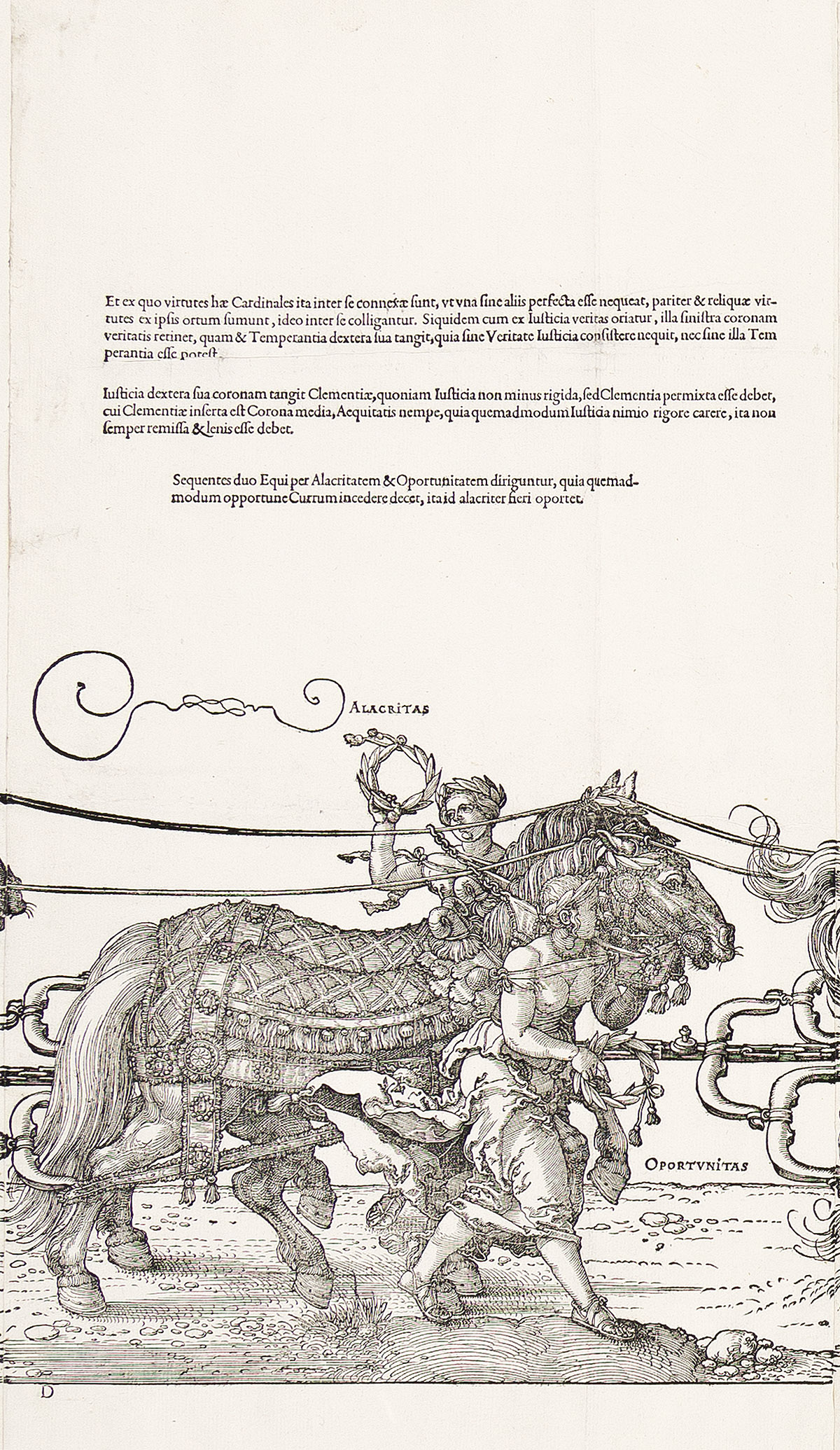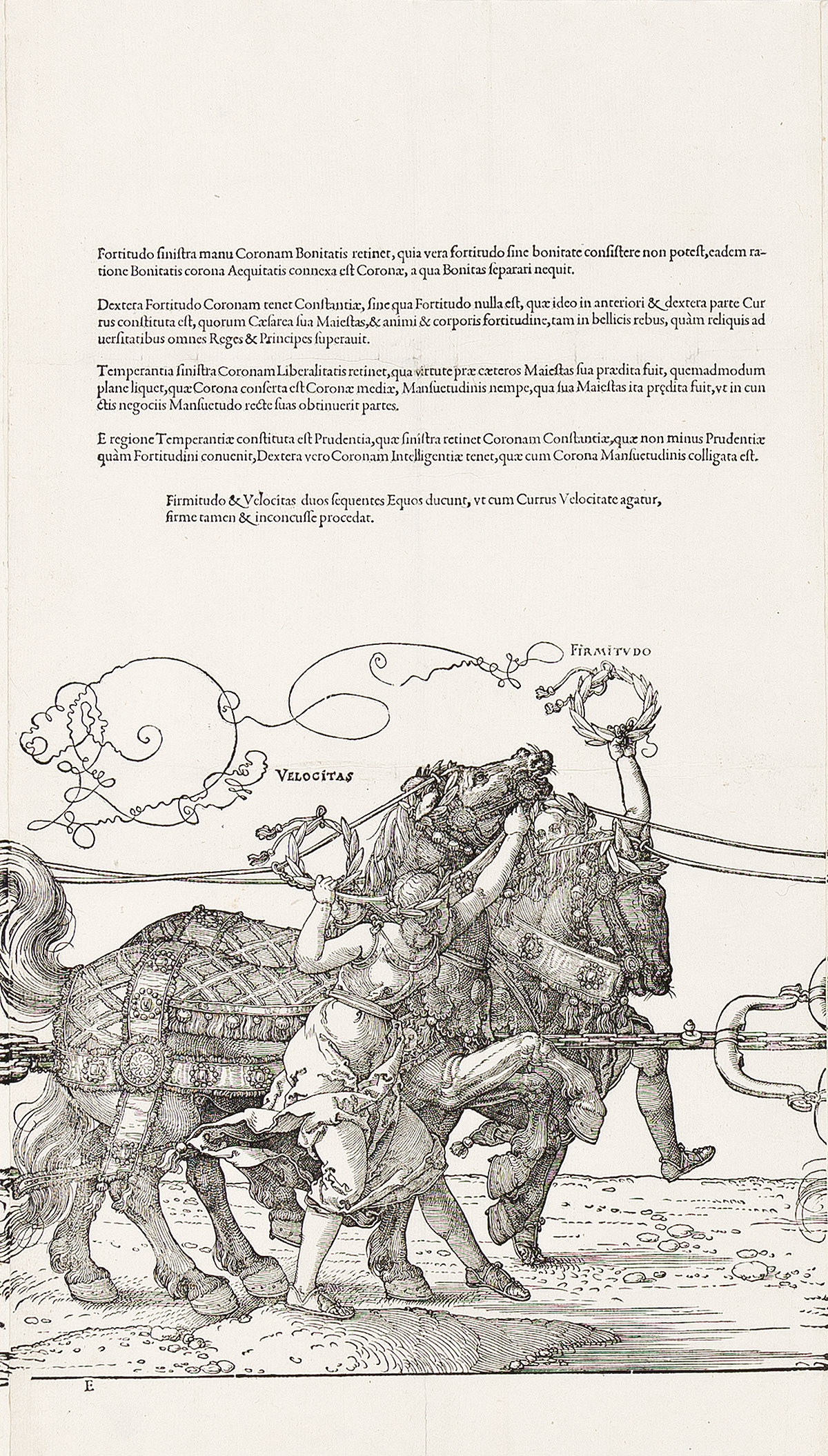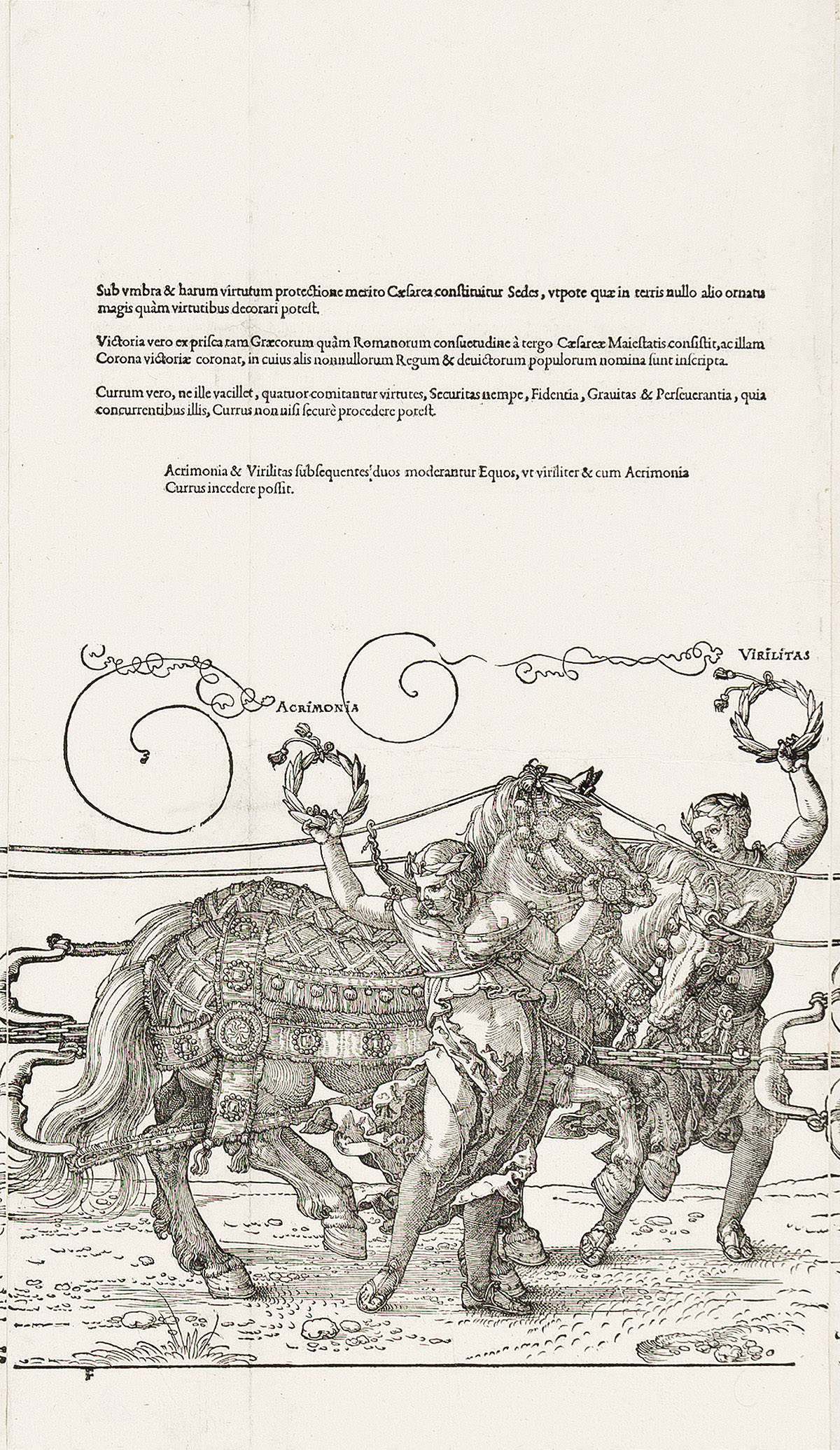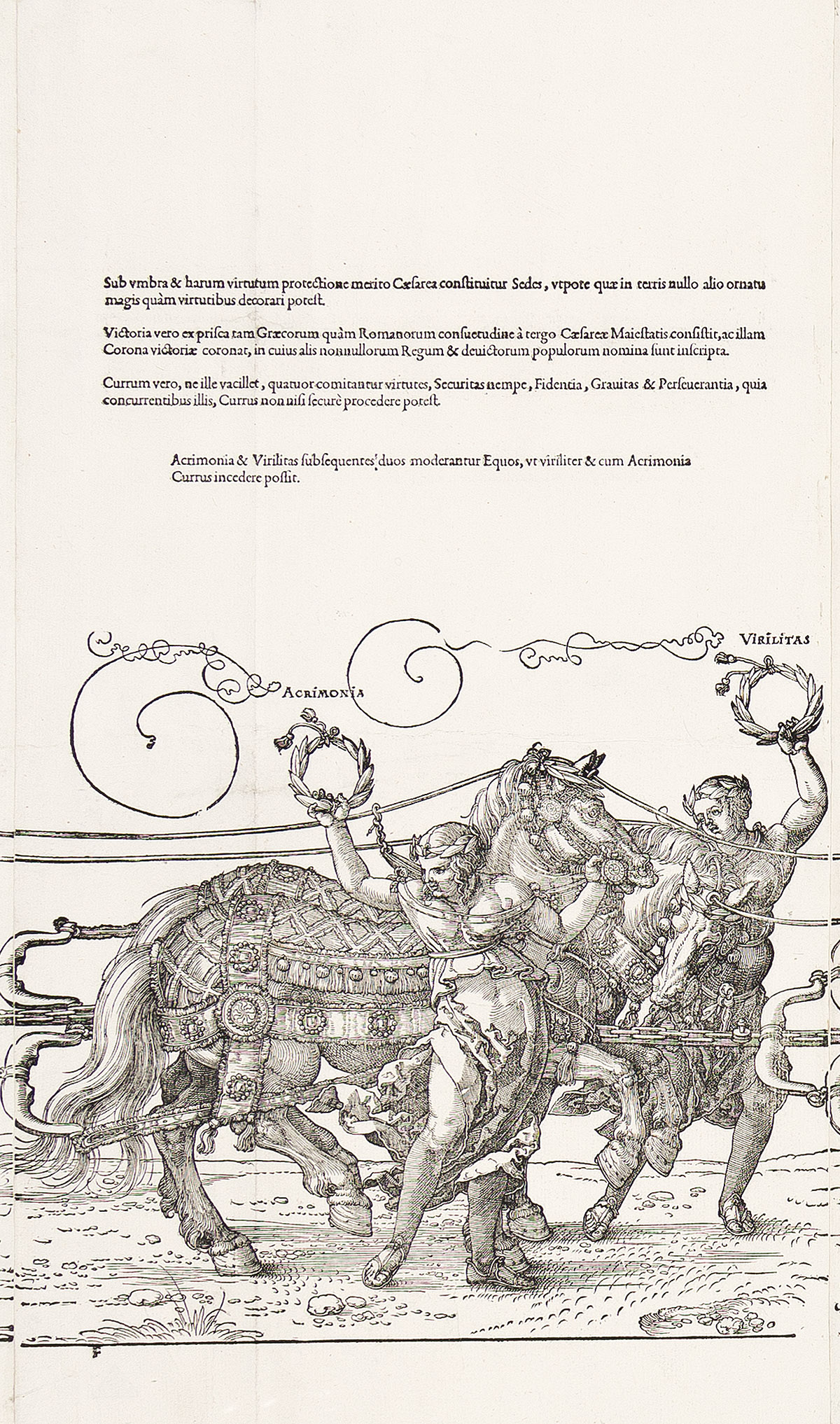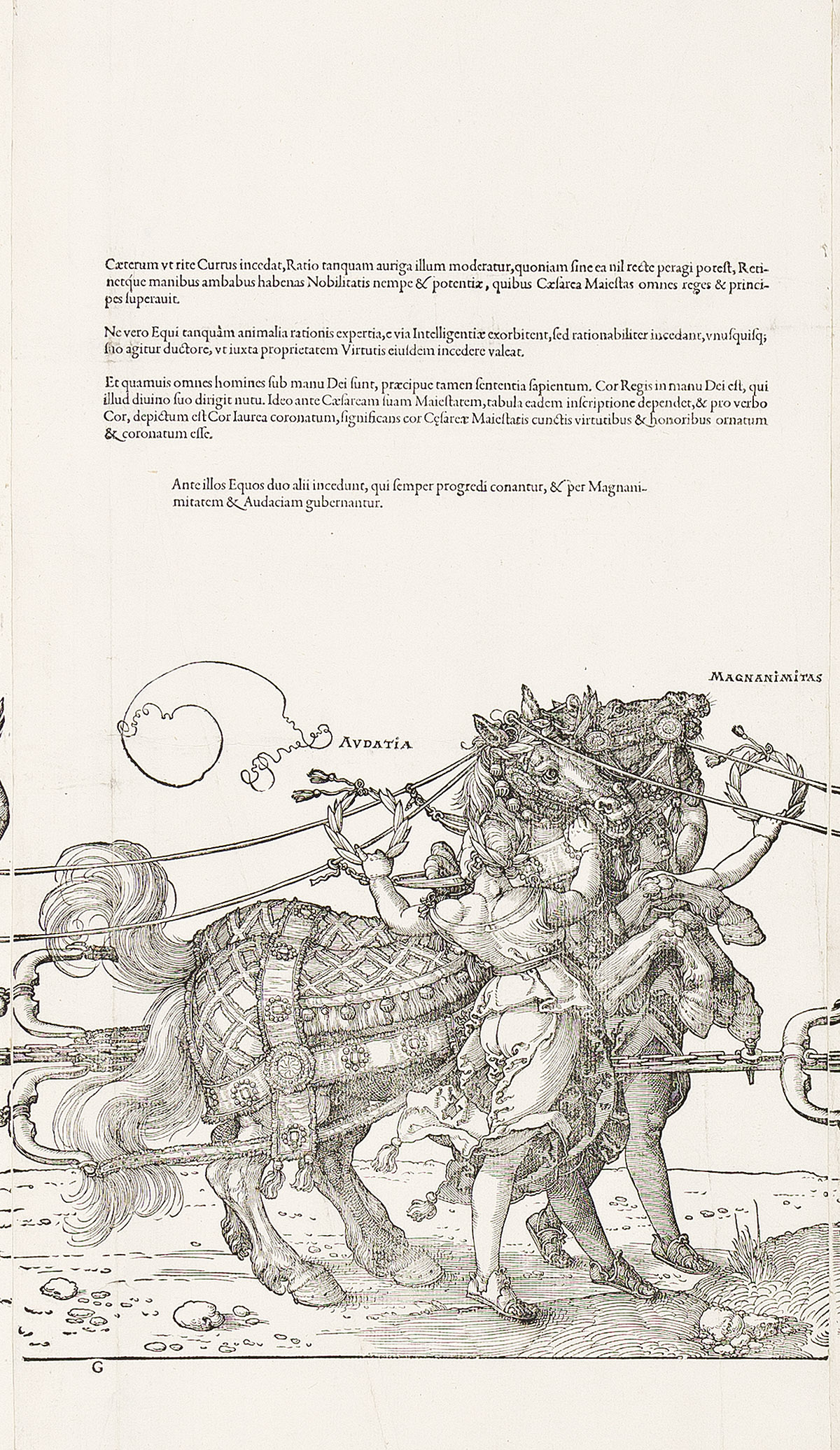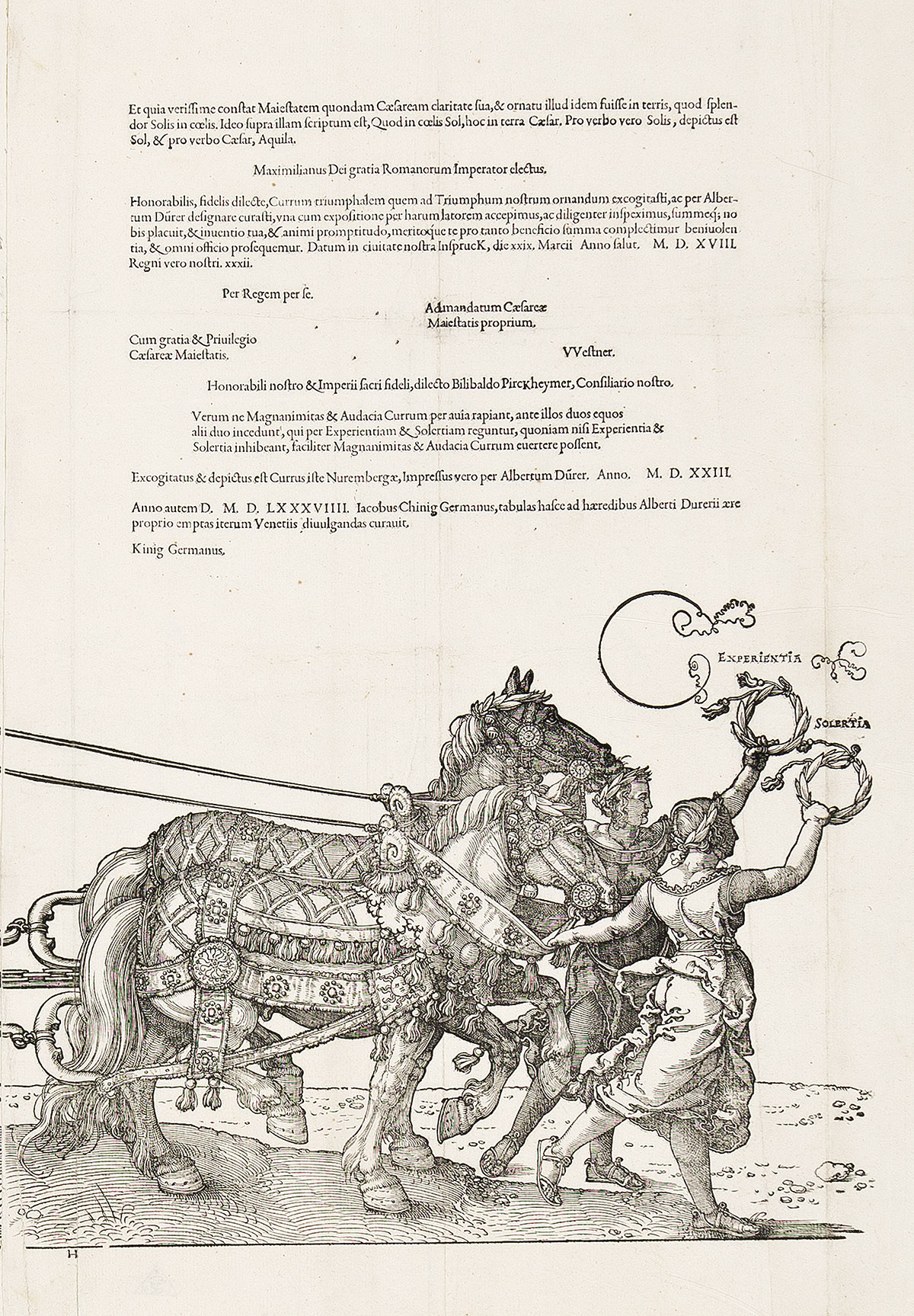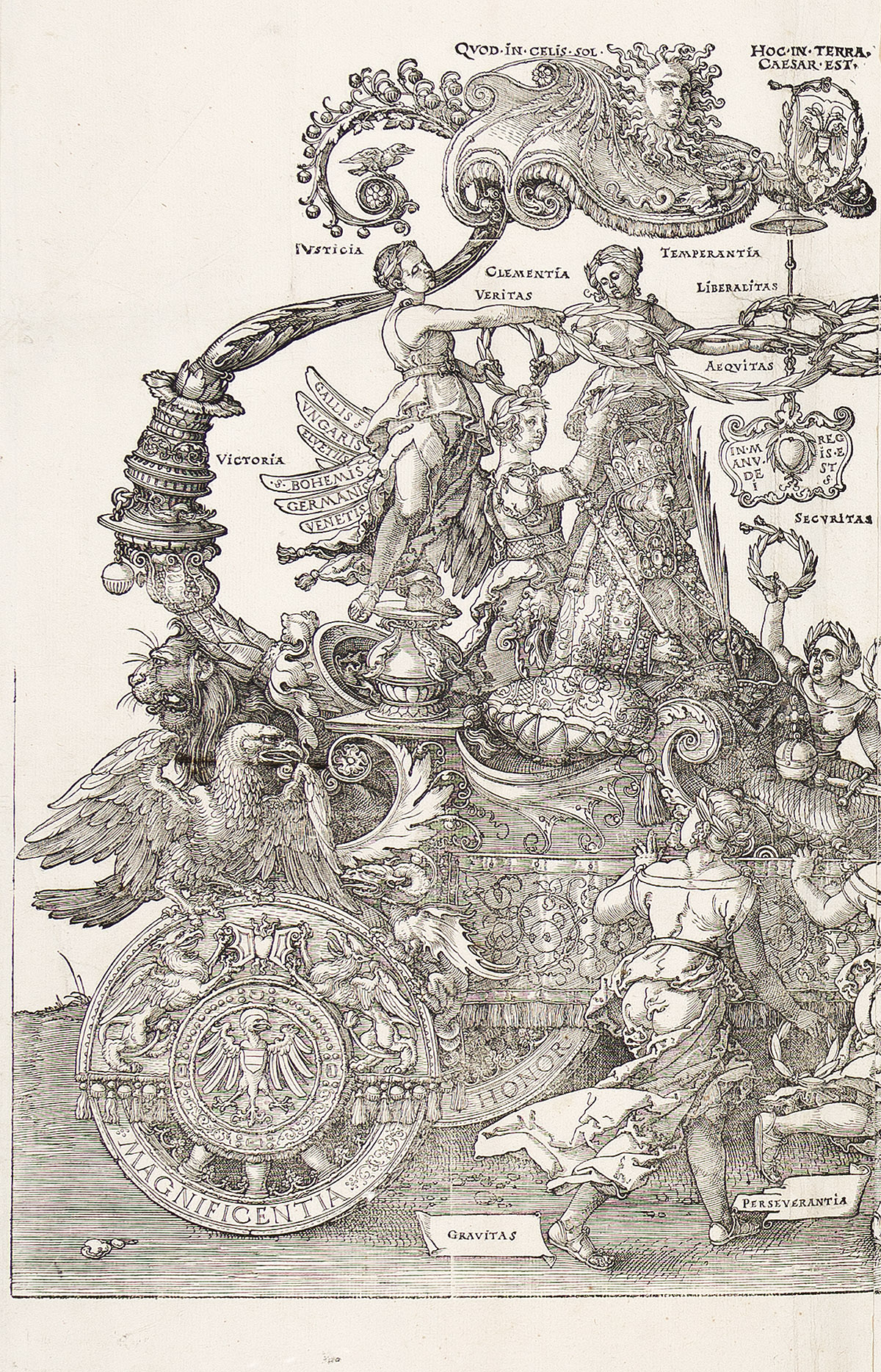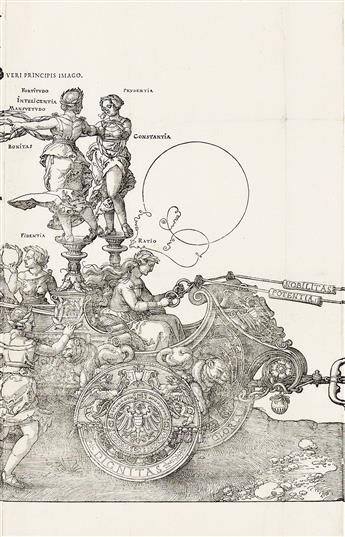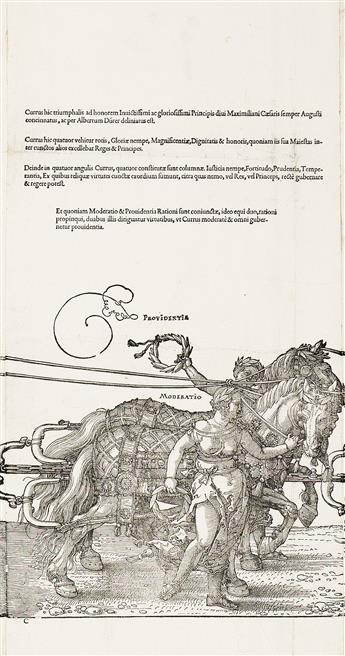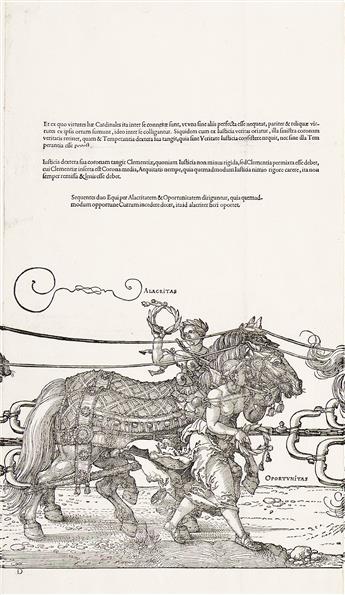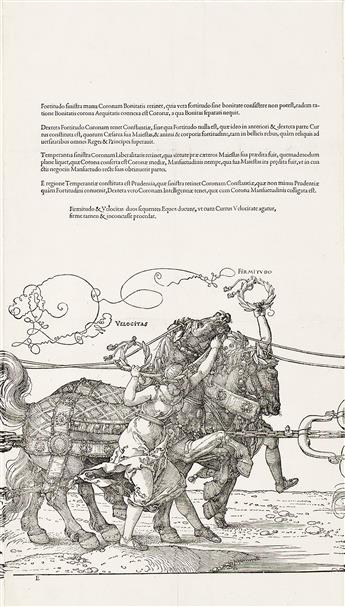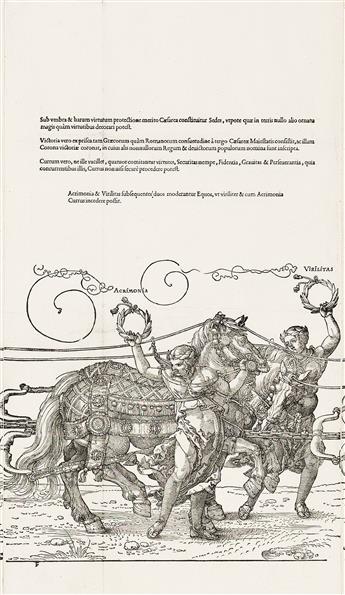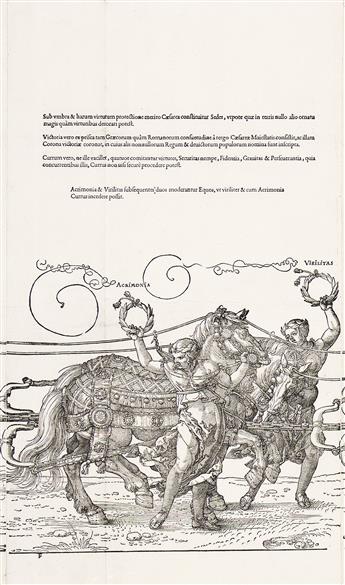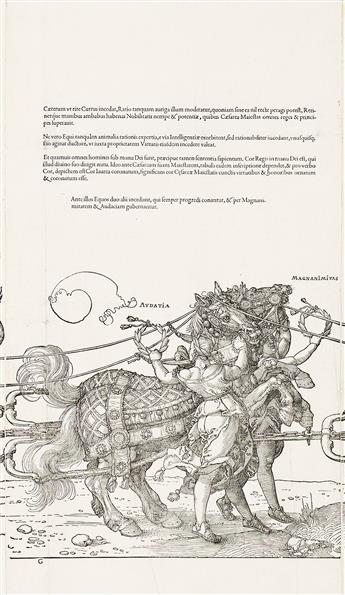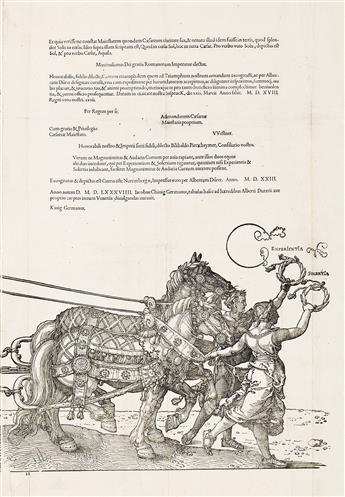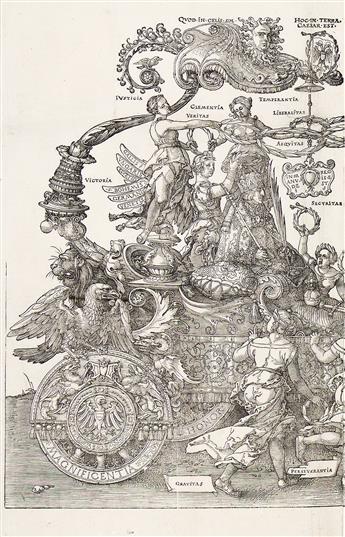Sale 2666 - Lot 23
Unsold
Estimate: $ 20,000 - $ 30,000
ALBRECHT DÜRER
The Great Triumphal Wagon.
Woodcut on 8 joined sheets of cream laid paper, 1522. 510x2365 mm; 20¼x93¼ (8 joined sheets overall), wide margins. The fifth edition (of 7), with the Latin text. Published by J. Chinig, Venice, in 1589. Two sheets with the shield and initials SCG watermark (Meder 338, which he dates from the region of Vicenza from 1562-72). A superb, well-inked impression of this large, extremely scarce woodcut, with strong contrasts and little to no sign of wear.
Provenance: Christian M. Nebehay, Vienna; private collection, New York; thence by descent to the current owner.
This large, ambitious woodcut was, along with the Great Triumphal Arch, 1515, planned by Dürer (1471-1528) in the early 1510s in celebration of the Holy Roman Emperor Maximilian I (1459-1519). According to Bartrum, "Having become emperor in 1508 of a vast Holy Roman Empire that he could not control effectively, Maximilian of Austria had, like all rulers of his age, an acute consciousness of his personal status. He became the first ruler to recognize, with much insight, to potential of the print as a cheap and effective way of perpetuating his name and dynasty.
During or shortly after his visit to Nuremberg for two weeks in February 1512 he appointed Dürer as overall artistic adviser for the massive Triumphal Arch and the Triumph of Maximilian. The latter remained incomplete at Maximilian's death in 1519, after which Dürer withdrew his contribution and issued it separately as the Great Triumphal Wagon in 1522," Albrecht Dürer and his Legacy, London, 2002, page 184).
Work on the monumental woodcut was not started until around 1518 and only completed in 1522, after the Emperor's death. In the image, Maximilian is seated on the wagon, surrounded by personifications of Victory (shown crowning the Emperor with a laurel wreath), Justice, Truth, Clemency and Security. Guiding the horse-drawn procession in front of Maximilian's chariot are further personifications: Reason, Fortitude, Prudence, Moderation, Foresight, Courage, Magnanimity, Skill and Experience. Dürer's friend, the humanist Willibald Pirckheimer, aided in conceiving the allegorical program for the monumental woodcut. Bartsch 139; Meder 252.
The Great Triumphal Wagon.
Woodcut on 8 joined sheets of cream laid paper, 1522. 510x2365 mm; 20¼x93¼ (8 joined sheets overall), wide margins. The fifth edition (of 7), with the Latin text. Published by J. Chinig, Venice, in 1589. Two sheets with the shield and initials SCG watermark (Meder 338, which he dates from the region of Vicenza from 1562-72). A superb, well-inked impression of this large, extremely scarce woodcut, with strong contrasts and little to no sign of wear.
Provenance: Christian M. Nebehay, Vienna; private collection, New York; thence by descent to the current owner.
This large, ambitious woodcut was, along with the Great Triumphal Arch, 1515, planned by Dürer (1471-1528) in the early 1510s in celebration of the Holy Roman Emperor Maximilian I (1459-1519). According to Bartrum, "Having become emperor in 1508 of a vast Holy Roman Empire that he could not control effectively, Maximilian of Austria had, like all rulers of his age, an acute consciousness of his personal status. He became the first ruler to recognize, with much insight, to potential of the print as a cheap and effective way of perpetuating his name and dynasty.
During or shortly after his visit to Nuremberg for two weeks in February 1512 he appointed Dürer as overall artistic adviser for the massive Triumphal Arch and the Triumph of Maximilian. The latter remained incomplete at Maximilian's death in 1519, after which Dürer withdrew his contribution and issued it separately as the Great Triumphal Wagon in 1522," Albrecht Dürer and his Legacy, London, 2002, page 184).
Work on the monumental woodcut was not started until around 1518 and only completed in 1522, after the Emperor's death. In the image, Maximilian is seated on the wagon, surrounded by personifications of Victory (shown crowning the Emperor with a laurel wreath), Justice, Truth, Clemency and Security. Guiding the horse-drawn procession in front of Maximilian's chariot are further personifications: Reason, Fortitude, Prudence, Moderation, Foresight, Courage, Magnanimity, Skill and Experience. Dürer's friend, the humanist Willibald Pirckheimer, aided in conceiving the allegorical program for the monumental woodcut. Bartsch 139; Meder 252.
Exhibition Hours
Exhibition Hours
Aliquam vulputate ornare congue. Vestibulum maximus, libero in placerat faucibus, risus nisl molestie massa, ut maximus metus lectus vel lorem.




